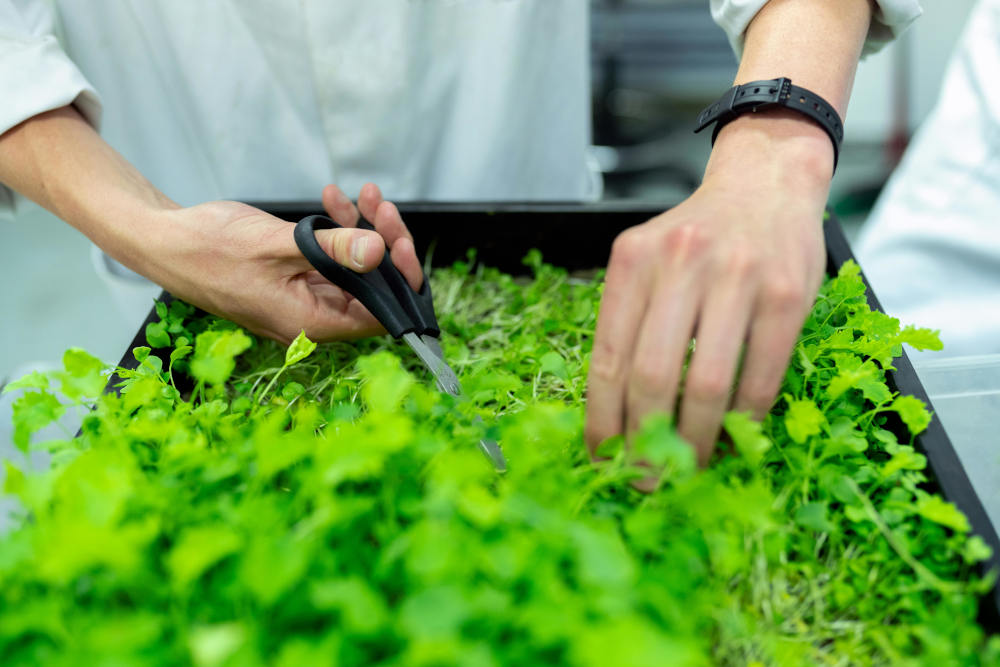
Growing your own herbs at home is one of the easiest and most rewarding ways to elevate your cooking. Fresh herbs not only add vibrant flavor, aroma, and color to your meals, but they also offer health benefits and save money at the grocery store. Whether you have a large garden, a small balcony, or just a sunny windowsill, many culinary herbs are easy to grow, harvest, and maintain.
In this article, we’ll explore the best herbs to grow for cooking, how to care for them, and ways to use them in your favorite recipes.
1. Basil (Ocimum basilicum)
Flavor profile: Sweet, slightly peppery, with a hint of anise.
Best for: Italian, Thai, and Mediterranean dishes.
Popular varieties: Genovese, Thai basil, Lemon basil, Purple basil.
Growing tips:
-
Prefers warm temperatures and full sun (6–8 hours daily).
-
Needs well-drained soil and regular watering.
-
Pinch off flower buds to encourage leaf growth.
Culinary uses:
Basil is a staple in pesto, caprese salads, and tomato-based sauces. Thai basil adds depth to curries and stir-fries. Use fresh basil at the end of cooking to preserve its flavor.
2. Parsley (Petroselinum crispum)
Flavor profile: Clean, slightly bitter, grassy.
Best for: European, Middle Eastern, and American dishes.
Popular varieties: Curly parsley, Flat-leaf (Italian) parsley.
Growing tips:
-
Thrives in full sun to partial shade.
-
Needs moist, well-drained soil.
-
Slow to germinate—soak seeds overnight before planting.
Culinary uses:
Flat-leaf parsley is preferred for cooking due to its stronger flavor. It’s widely used in soups, stews, salads, and tabbouleh. Curly parsley is great as a garnish.
3. Cilantro (Coriandrum sativum)
Flavor profile: Bright, citrusy, with a slight peppery kick.
Best for: Mexican, Indian, and Southeast Asian dishes.
Note: The seeds of cilantro are known as coriander.
Growing tips:
-
Grows best in cooler temperatures (spring and fall).
-
Prefers full sun and well-drained soil.
-
Bolts (flowers) quickly in heat, so harvest regularly.
Culinary uses:
Fresh cilantro is essential for salsas, curries, chutneys, and tacos. It’s best added at the end of cooking or used raw.
4. Thyme (Thymus vulgaris)
Flavor profile: Earthy, slightly minty, and savory.
Best for: French, Italian, and Mediterranean cuisines.
Popular varieties: English thyme, Lemon thyme.
Growing tips:
-
Prefers full sun and well-drained soil.
-
Drought-tolerant; do not overwater.
-
Trim regularly to keep it bushy.
Culinary uses:
Thyme is a workhorse in the kitchen, enhancing roasts, soups, stuffing, and vegetable dishes. It pairs well with rosemary, garlic, and olive oil.
5. Rosemary (Rosmarinus officinalis)
Flavor profile: Piney, woody, with a sharp, peppery note.
Best for: Roasted meats, breads, and Mediterranean dishes.
Growing tips:
-
Loves full sun and well-drained soil.
-
Drought-resistant but avoid soggy roots.
-
Can be grown indoors in pots with good drainage.
Culinary uses:
Use rosemary sprigs in roast chicken, potatoes, lamb, and focaccia bread. Strip the leaves from the stems before chopping or cooking.
6. Mint (Mentha spp.)
Flavor profile: Cool, sweet, and refreshing.
Best for: Drinks, desserts, salads, and Middle Eastern dishes.
Popular varieties: Spearmint, Peppermint, Chocolate mint, Apple mint.
Growing tips:
-
Grows aggressively—best grown in containers.
-
Likes partial shade to full sun.
-
Keep soil moist but not soggy.
Culinary uses:
Mint brightens cocktails (like mojitos), teas, fruit salads, lamb dishes, and yogurt sauces. Also great in iced water or smoothies.
7. Oregano (Origanum vulgare)
Flavor profile: Warm, peppery, slightly bitter.
Best for: Italian, Greek, and Mexican dishes.
Growing tips:
-
Thrives in full sun and well-drained soil.
-
Drought-tolerant once established.
-
Harvest leaves just before flowering for peak flavor.
Culinary uses:
Oregano is a classic for pizza, pasta sauce, grilled meats, and Greek salads. It can be used fresh or dried, with dried often having a stronger flavor.
8. Chives (Allium schoenoprasum)
Flavor profile: Mild onion or garlic-like taste.
Best for: Eggs, potatoes, soups, and sauces.
Growing tips:
-
Grow in full sun to partial shade.
-
Tolerates cooler weather.
-
Cut back to the base to encourage new growth.
Culinary uses:
Chives are perfect in scrambled eggs, sour cream dips, baked potatoes, and salads. Best used fresh and added at the end of cooking.
9. Sage (Salvia officinalis)
Flavor profile: Earthy, slightly peppery, with hints of eucalyptus and lemon.
Best for: Stuffing, poultry, pork, and fall dishes.
Growing tips:
-
Likes full sun and sandy, well-drained soil.
-
Tolerates drought well.
-
Prune regularly to keep it from becoming woody.
Culinary uses:
Sage is delicious in Thanksgiving stuffing, sausages, butter sauces, and roasted vegetables. Try frying sage leaves in butter for a crispy garnish.
10. Tarragon (Artemisia dracunculus)
Flavor profile: Licorice-like, bittersweet, and aromatic.
Best for: French cuisine, fish, and egg dishes.
Popular variety: French tarragon (best for cooking).
Growing tips:
-
Needs full sun and well-drained soil.
-
Water moderately.
-
French tarragon does not produce viable seeds—grow from cuttings or divisions.
Culinary uses:
Tarragon shines in béarnaise sauce, chicken dishes, vinaigrettes, and egg salads. It’s also used to infuse vinegars and oils.
Bonus: Honorable Mentions
-
Dill – Ideal for fish, pickles, and salads.
-
Lemongrass – Essential in Thai and Vietnamese cooking.
-
Bay Laurel – Adds depth to soups and stews (used dried).
-
Lovage – Tastes like celery; great in stocks and soups.
Tips for Growing Herbs Indoors
If you lack outdoor space, herbs can thrive indoors with the right care:
-
Lighting: Most herbs need 6+ hours of sunlight. A south-facing window or grow lights can help.
-
Containers: Use pots with drainage holes to prevent root rot.
-
Watering: Let the top inch of soil dry out between waterings (except mint, which likes more moisture).
-
Harvesting: Regular snipping encourages bushier growth.
How to Store Fresh Herbs
-
Refrigerator: Wrap herbs like parsley and cilantro in damp paper towels and store in a plastic bag.
-
Water jar: Basil does better in a glass of water at room temperature.
-
Freezing: Chop and freeze herbs in olive oil using ice cube trays for quick use later.
-
Drying: Tie hardy herbs (like oregano or thyme) into small bundles and hang upside down to dry.
Conclusion
Growing your own cooking herbs is one of the simplest ways to make your meals more flavorful and nutritious. From the zesty brightness of basil to the earthy richness of thyme, fresh herbs are like nature’s seasoning cabinet. With a bit of sunlight, water, and care, you can create a living pantry that keeps on giving.
Whether you’re a home cook or an aspiring chef, planting a few of these versatile herbs will not only enhance your dishes but also connect you to the joy of gardening and the beauty of fresh, wholesome food.
Was this article helpful to you? Please tell us what you liked or didn't like in the comments below.
About the Author: Alex Assoune
What We're Up Against
Multinational corporations overproducing cheap products in the poorest countries.
Huge factories with sweatshop-like conditions underpaying workers.
Media conglomerates promoting unethical, unsustainable products.
Bad actors encouraging overconsumption through oblivious behavior.
- - - -
Thankfully, we've got our supporters, including you.
Panaprium is funded by readers like you who want to join us in our mission to make the world entirely sustainable.
If you can, please support us on a monthly basis. It takes less than a minute to set up, and you will be making a big impact every single month. Thank you.































0 comments